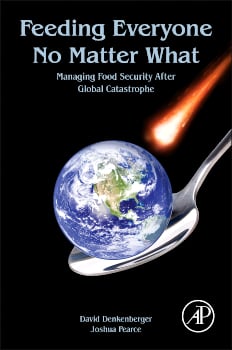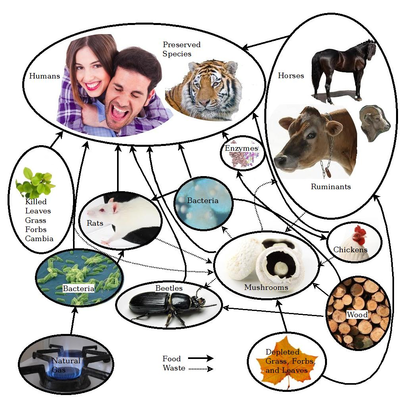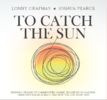
A number of catastrophes could block the sun, including bolide (asteroid/comet) impact, super volcanic eruption, and nuclear war with the burning of cities (nuclear winter). Prevention of these catastrophes would be preferable, but there are not options for all of these risks. Therefore, a backup plan is necessary and previous work has shown these alternate are technically capable of feeding everyone with macronutrients (protein, carbohydrates, and lipids) and minerals could be extracted from the ground. The present work analyses methods to viably produce vitamins to fortify the entire human population for this sun blocking scenario and other catastrophic scenarios will be discussed. First the vitamin content of various alternate foods is determined as a percent of the U.S. recommended daily allowance. Many of these alternate foods are not commonly used as food at this point, so the closest available proxy was used for the vitamin content of some of these foods. Next, feasibility of the different alternate food sources was determined to construct an example diet and the calories from each alternative food is tabulated. Finally, the percent of the RDA for several vitamins are determined. The results show the intake of all of these vitamins is below the toxic limit and that it is apparent that the example combination, and many others, are capable of sustaining the nutritional needs of an average human life.
Keywords[edit | edit source]

solar storm, high-altitude electromagnetic pulse, computer virus, global catastrophic risk, existential risk, industry, food, electricity, nuclear war, alternate food, vitamins
See also[edit | edit source]

- Feeding Everyone No Matter What - The full book main page
- David Denkenberger and Joshua Pearce, Feeding Everyone No Matter What: Managing Food Security After Global Catastrophe , 1st Edition, Academic Press, 2015
- Free Preview: Google books
- Cover on Academia
- Facebook page
- Alternative Foods as a Solution to Global Food Supply Catastrophes
- Resilience to global food supply catastrophes
- Feeding Everyone if the Sun is Obscured and Industry is Disabled
- Cost-Effectiveness of Interventions for Alternate Food to Address Agricultural Catastrophes Globally
- Feeding Everyone: Solving the Food Crisis in Event of Global Catastrophes that Kill Crops or Obscure the Sun
- Food without sun: Price and life-saving potential
- Cost-effectiveness of interventions for alternate food in the United States to address agricultural catastrophes
- Micronutrient Availability in Alternative Foods During Agricultural Catastrophes
- Preliminary Automated Determination of Edibility of Alternative Foods: Non-Targeted Screening for Toxins in Red Maple Leaf Concentrate
- Open Source Software Toolchain for Automated Non-Targeted Screening for Toxins in Alternative Foods
- Scaling of greenhouse crop production in low sunlight scenarios
- Potential of microbial protein from hydrogen for preventing mass starvation in catastrophic scenarios
- U.S. Potential of Sustainable Backyard Distributed Animal and Plant Protein Production During & After Pandemics
- Global distribution of forest classes and leaf biomass for use as alternative foods to minimize malnutrition
- Long-term cost-effectiveness of interventions for loss of electricity/industry compared to artificial general intelligence safety
- Long term cost-effectiveness of resilient foods for global catastrophes compared to artificial general intelligence safety
- Rapid repurposing of pulp and paper mills, biorefineries, and breweries for lignocellulosic sugar production in global food catastrophes
- Nutrition in Abrupt Sunlight Reduction Scenarios: Envisioning Feasible Balanced Diets on Resilient Foods
- Methane Single Cell Protein: securing protein supply during global food catastrophes
- Killing two birds with one stone: chemical and biological upcycling of polyethylene terephthalate plastics into food
- How Easy is it to Feed Everyone? Economic Alternatives to Eliminate Human Nutrition Deficits
- Quantifying Alternative Food Potential of Agricultural Residue in Rural Communities of Sub-Saharan Africa
- Yield and Toxin Analysis of Leaf Protein Concentrate from Common North American Coniferous Trees
- Toxic Analysis of Leaf Protein Concentrate Regarding Common Agricultural Residues
- Towards Sustainable Protein Sources: The Thermal and Rheological Properties of Alternative Proteins
Additional Information[edit source]
- ALLFED
- Dave Denkenberger Publications
- OSE Wiki "Synfood" (i.e. protein and other dietary components from microbial organisms fed on gas or other hydrocarbons)






